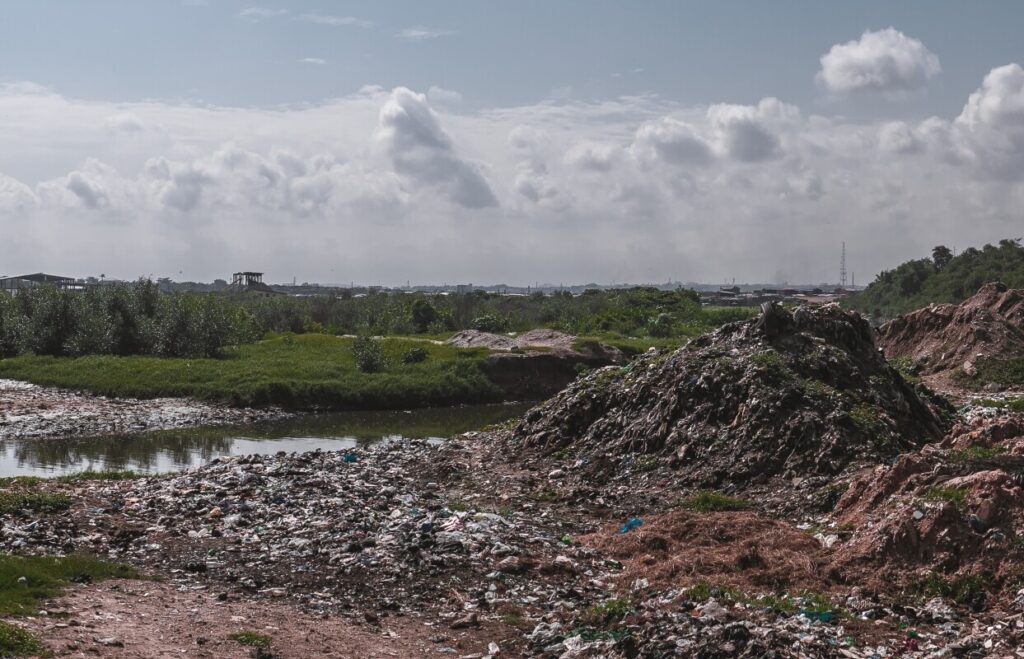Helped along by the superpower of clinical depression, I’ve created some pretty monstrous laundry piles in my day — the kind that end up turning into a full-day gauntlet that approaches the forced labor of a prison laundry room. Especially in places like New York City where in-unit laundry is a luxury, you can end up carting an incredible amount of garments back and forth in numbers that feel like a ketchup truck crashed into a Goodwill and you’re in charge of getting every piece of clothing back in a salable state.
Of course, these personal piles pale in comparison to the sort of collective waste that the human population becomes better at pumping out every year. In the same vein as overflowing landfills or floating islands of single-use plastic, there’s also a place in the world where there’s a giant mountain of filthy clothes from across the globe. It’s in Ghana, near what’s known as the Korle Lagoon, and it’s by all accounts an unpleasant place in most physical senses. What it’s mostly made up of is donated clothes. Despite the obvious truth that there’s millions of needy people all over the planet, the simple fact is that some things are, truly, trash.
Throwing clothes away feels bad, and that’s led to any number of usually fun-colored trash-can alternatives that promise they’ll go to good use. If you’ve ever filled a bag with old clothes to carry to Goodwill or a charity dropbox, though, you know there were probably a few items in there that you could not, in good faith, argue are fit for future wear. Mixed in with T-shirts you’ve outgrown are likely a couple pieces of clothing that were bottom-of-the-barrel in terms of quality to begin with, that eventually fell so low as to not even earn time as a sleep shirt. It turns out, those same standards usually hold when they’re considered a donation.
The clothes worth distributing or selling are skimmed off the top as the clothes in question make their way from stop to stop, until what’s left is nothing more than raw material. At this point, some of it is torn up and repurposed into things like cheap blankets distributed in disaster areas, and likely thrown away once again after that. Ghana is the final stop for threads with nothing left to give, as the country receives 63.5 million kilograms of used clothes a year.
And yes, by all accounts, it smells just as bad as you’d imagine.

